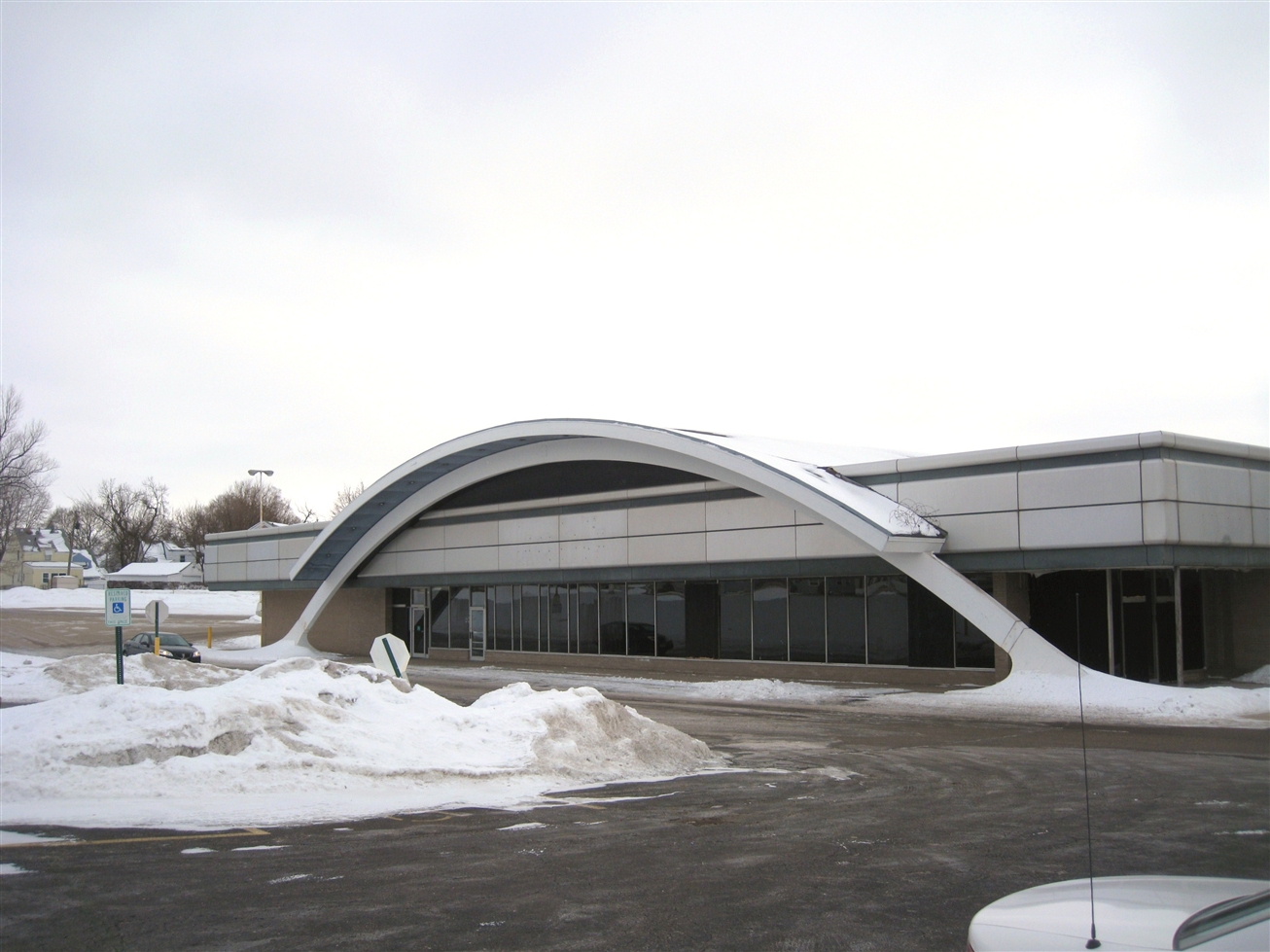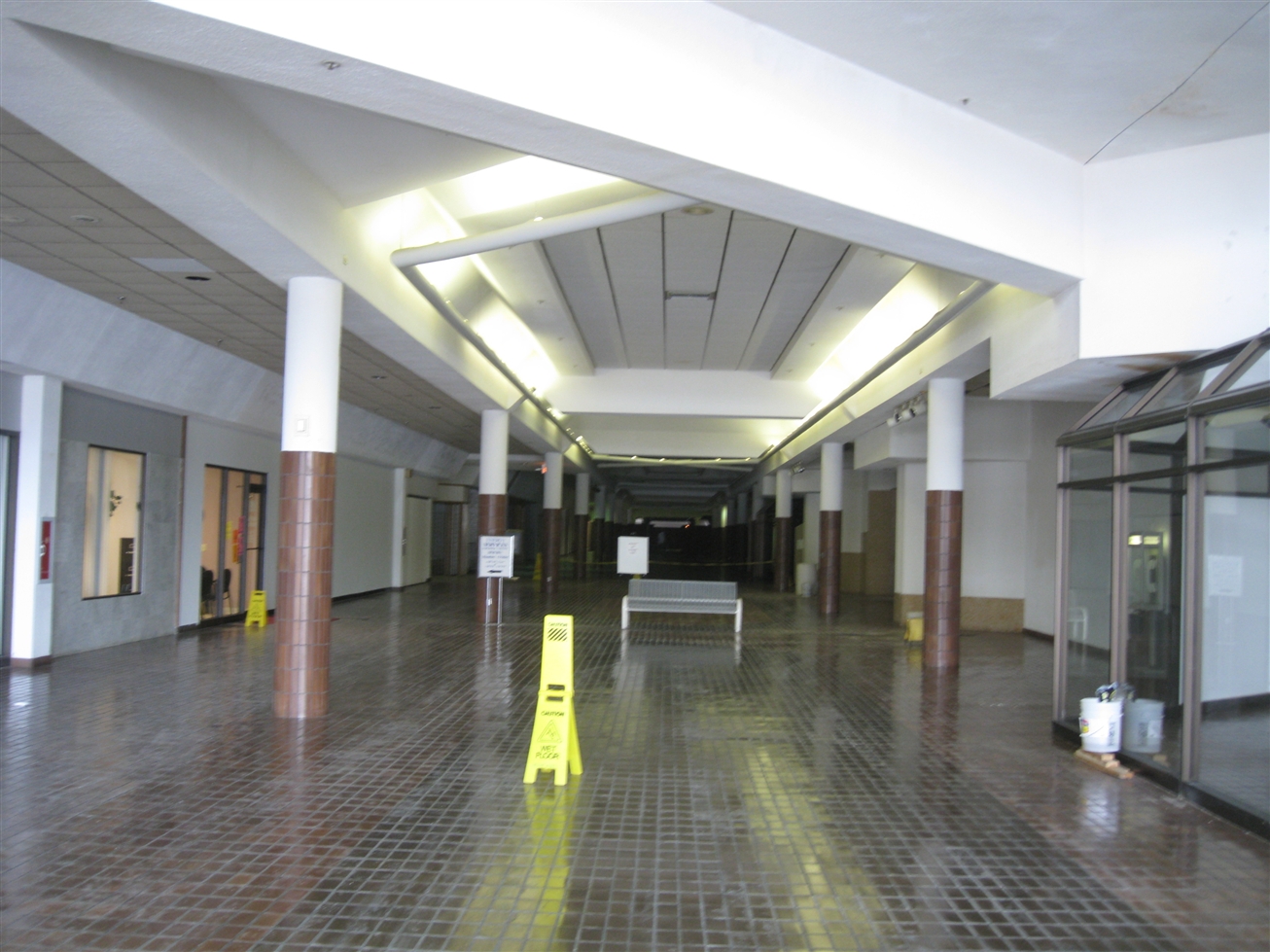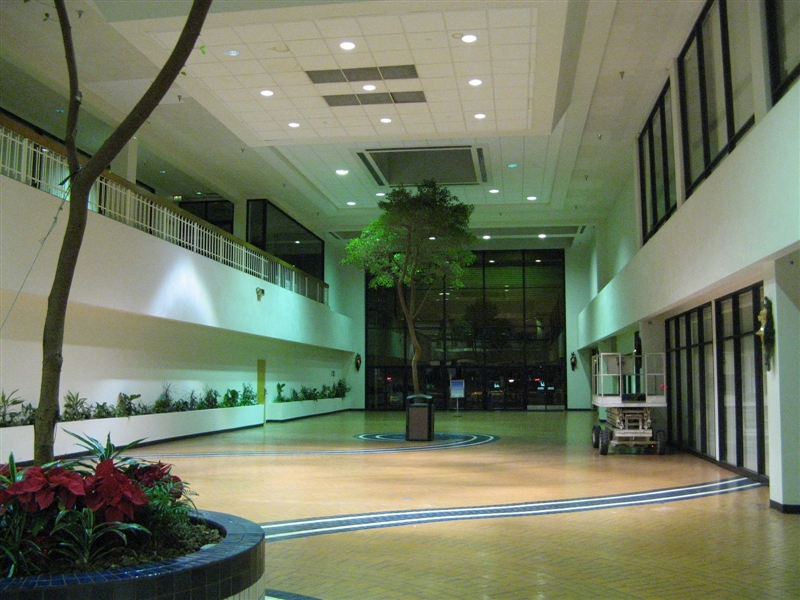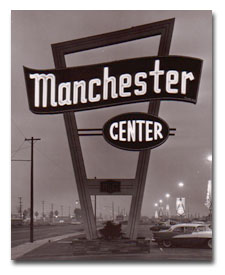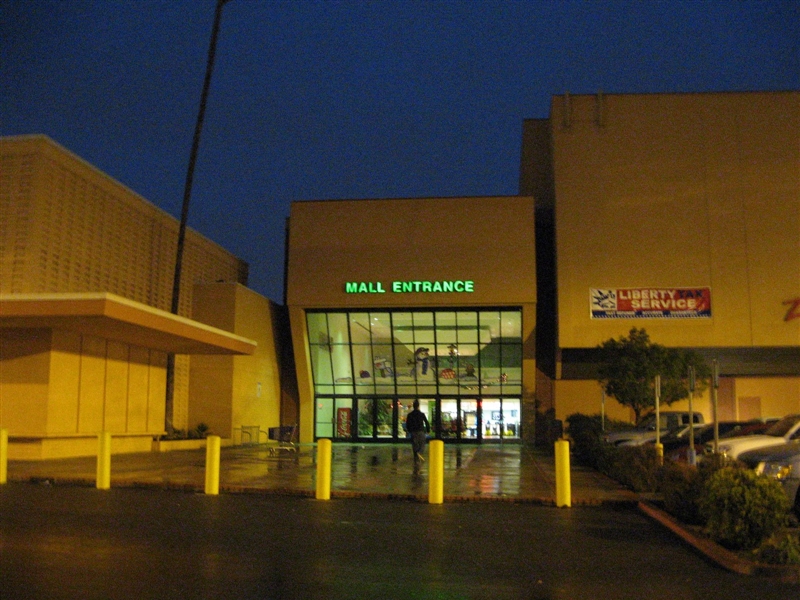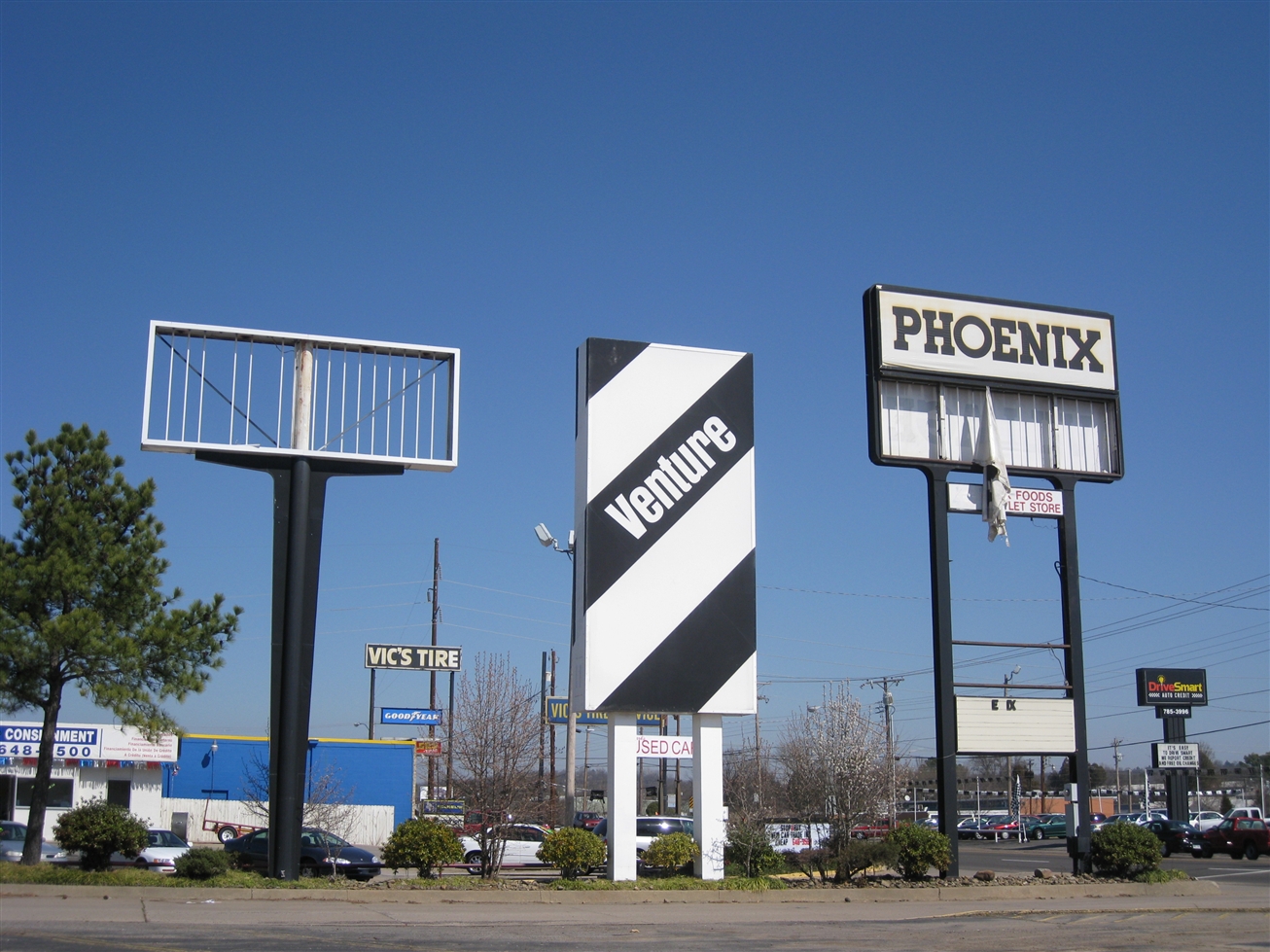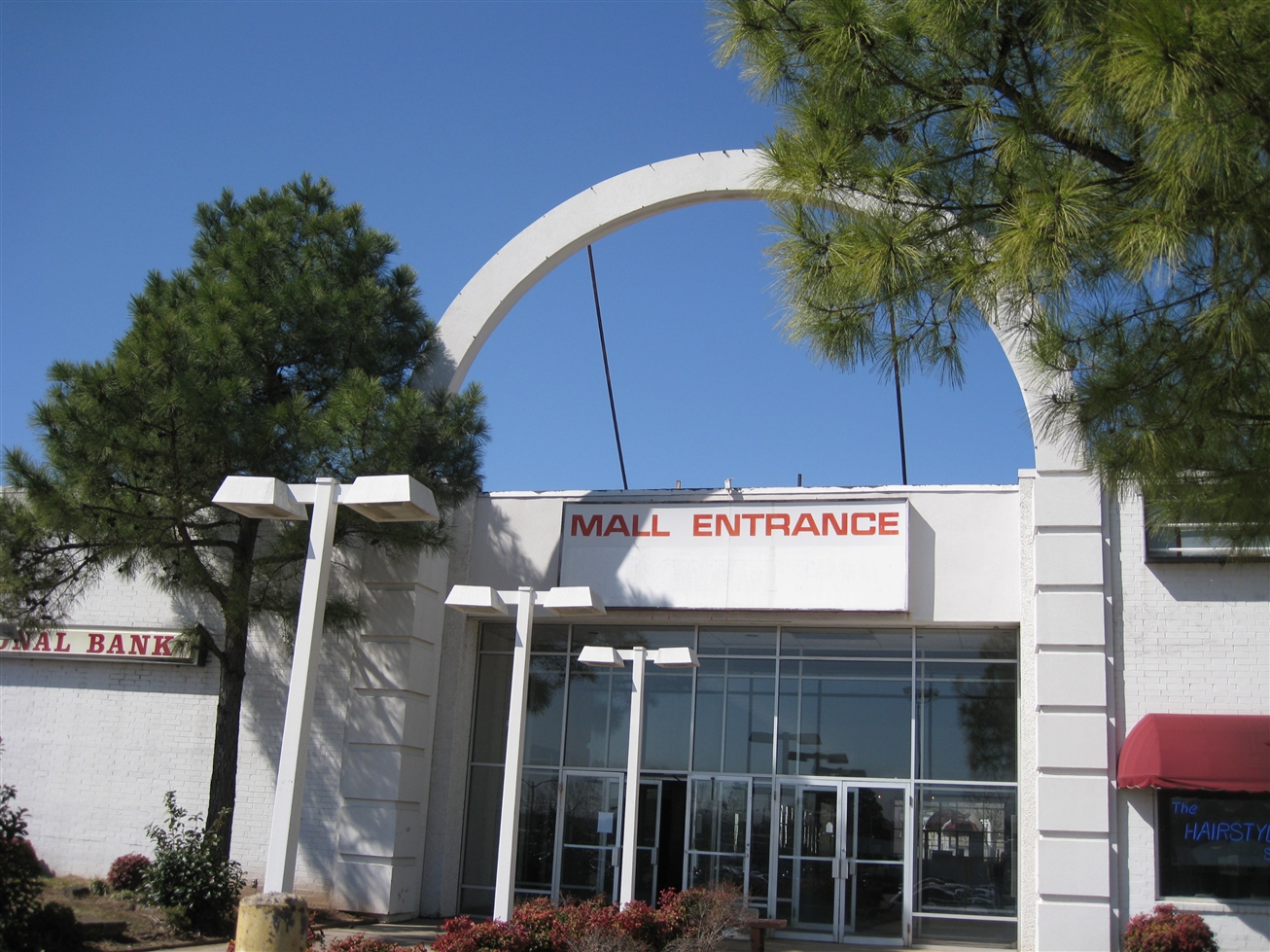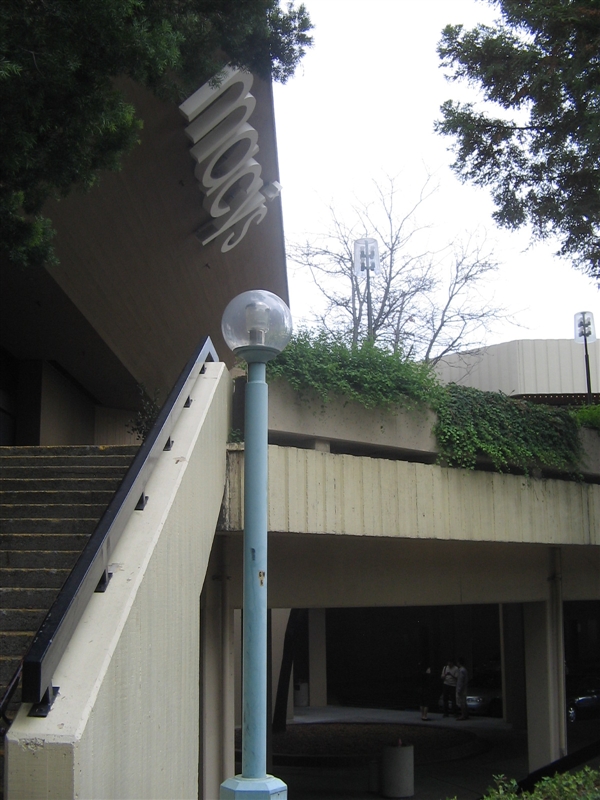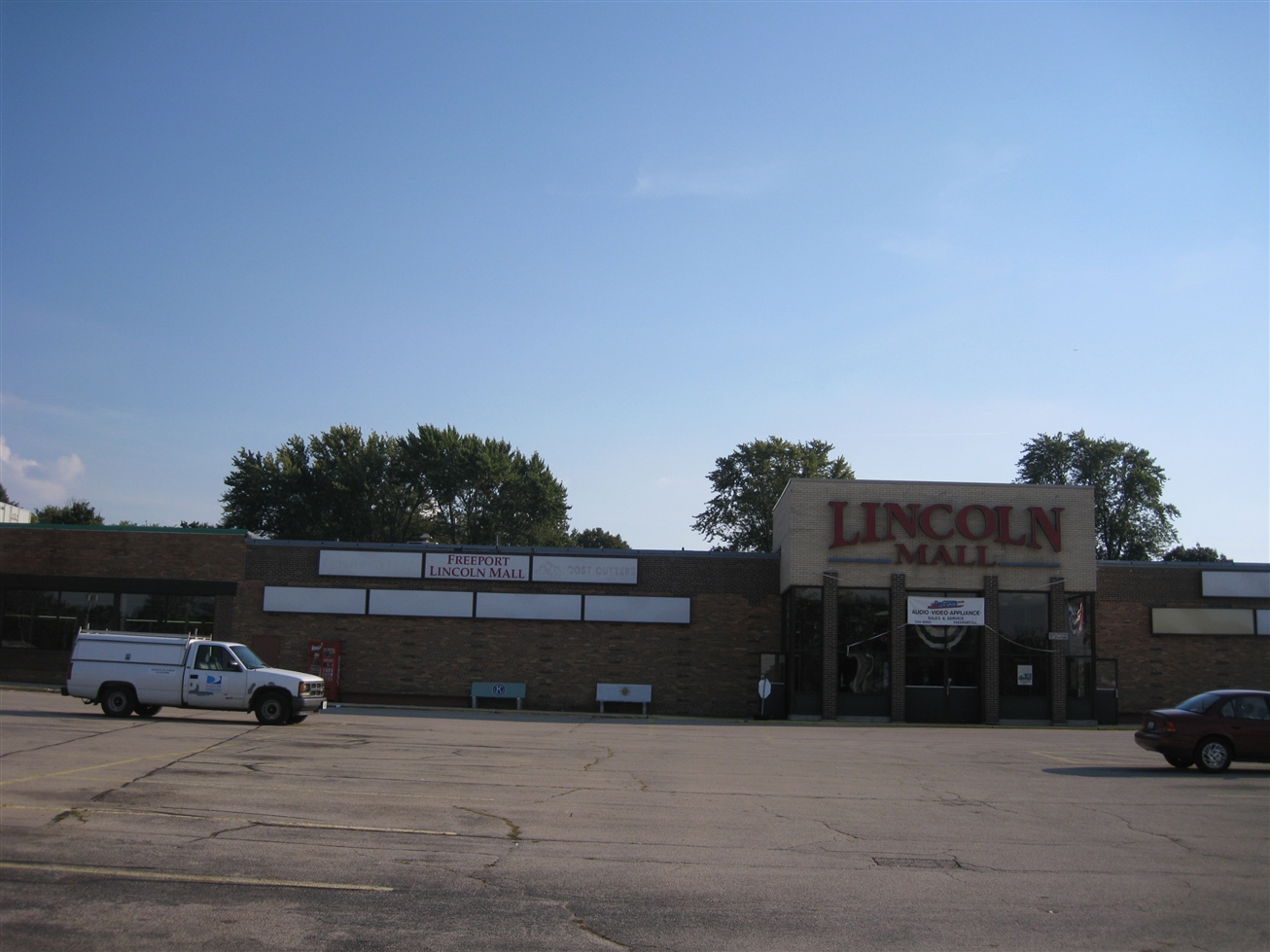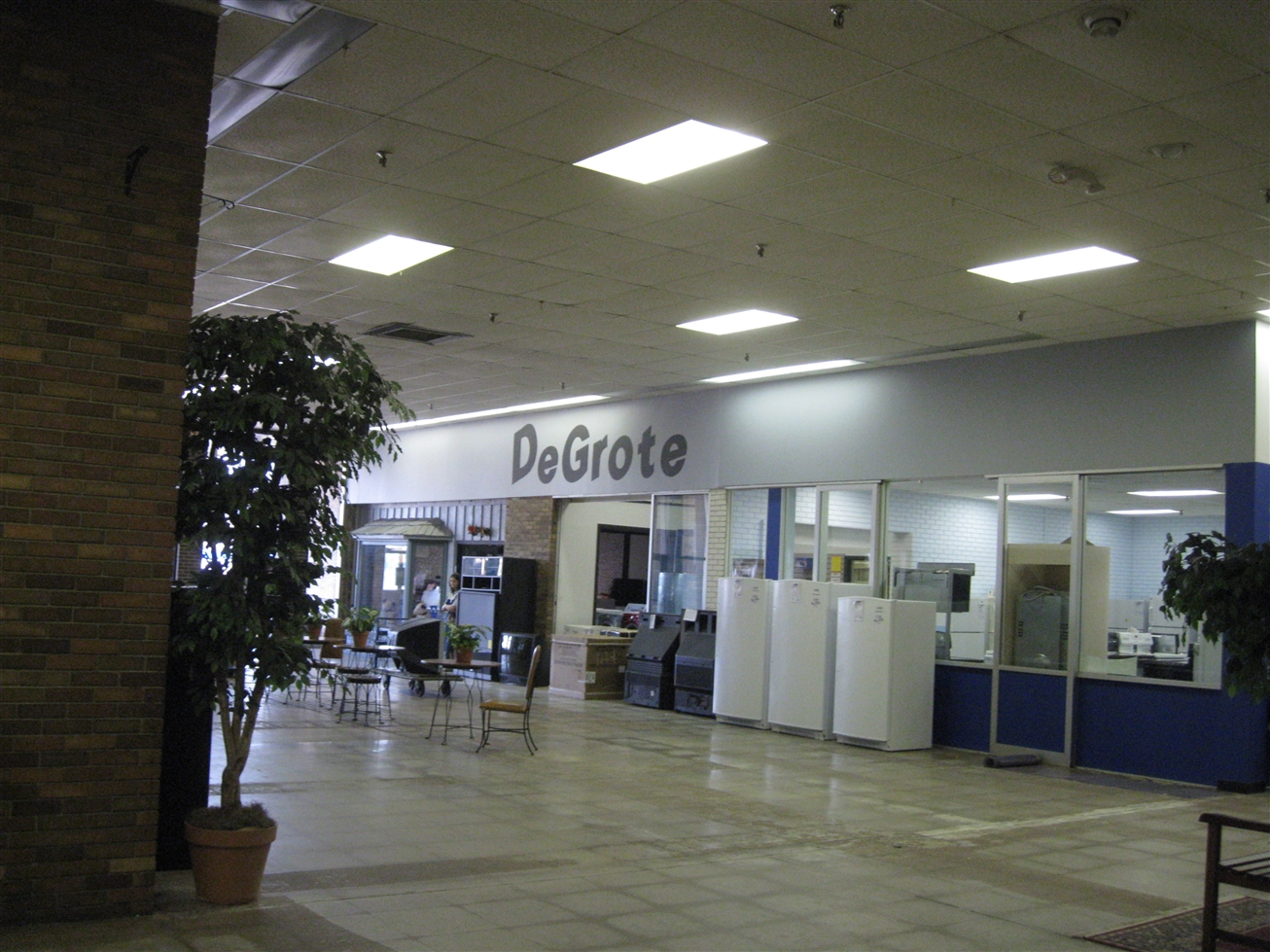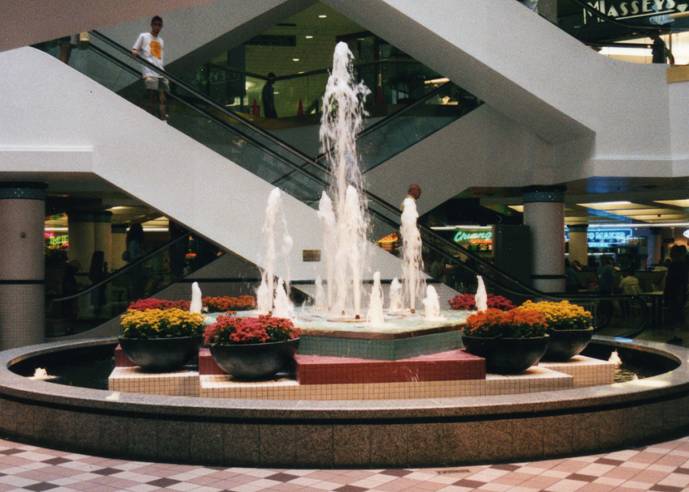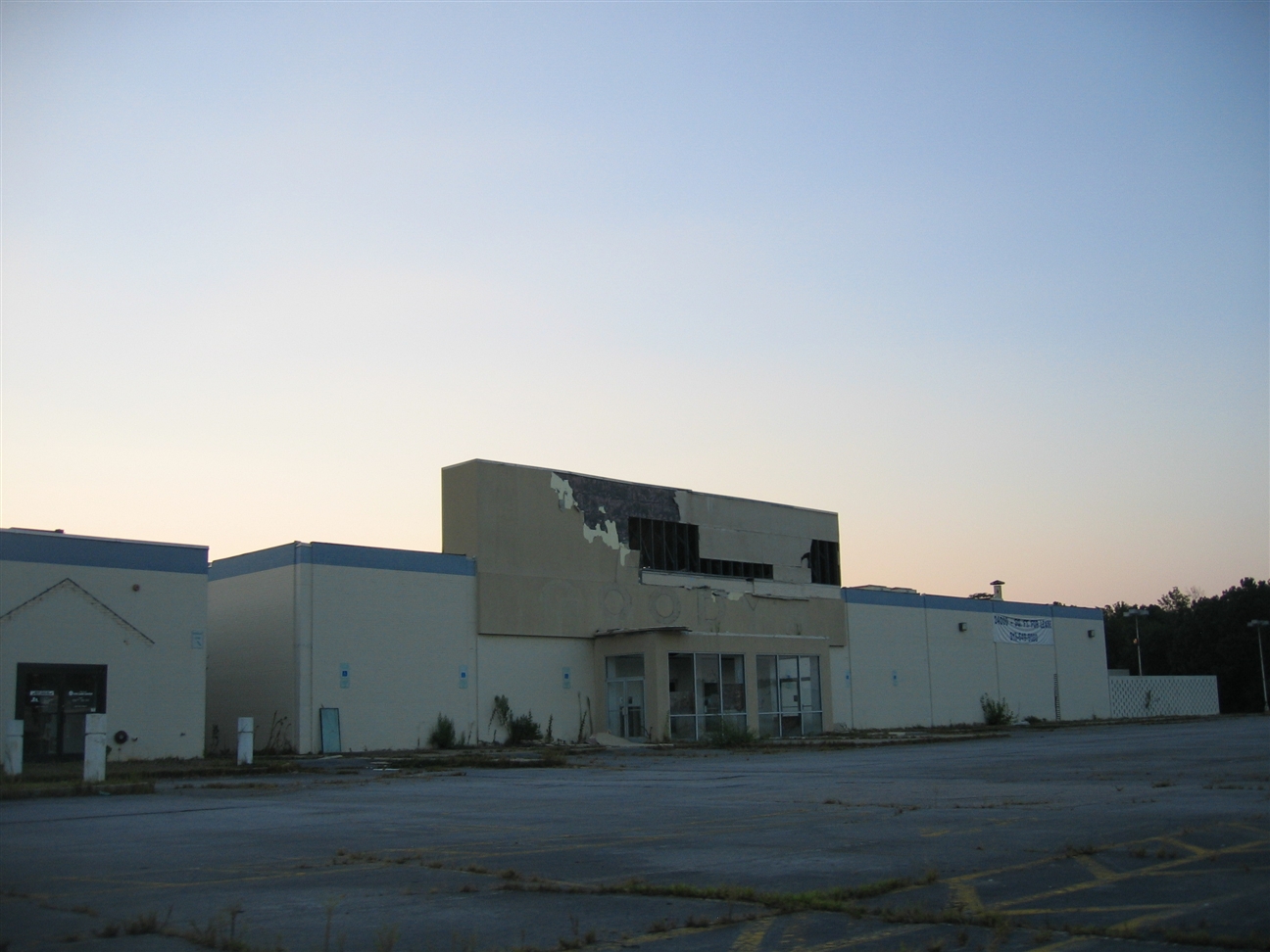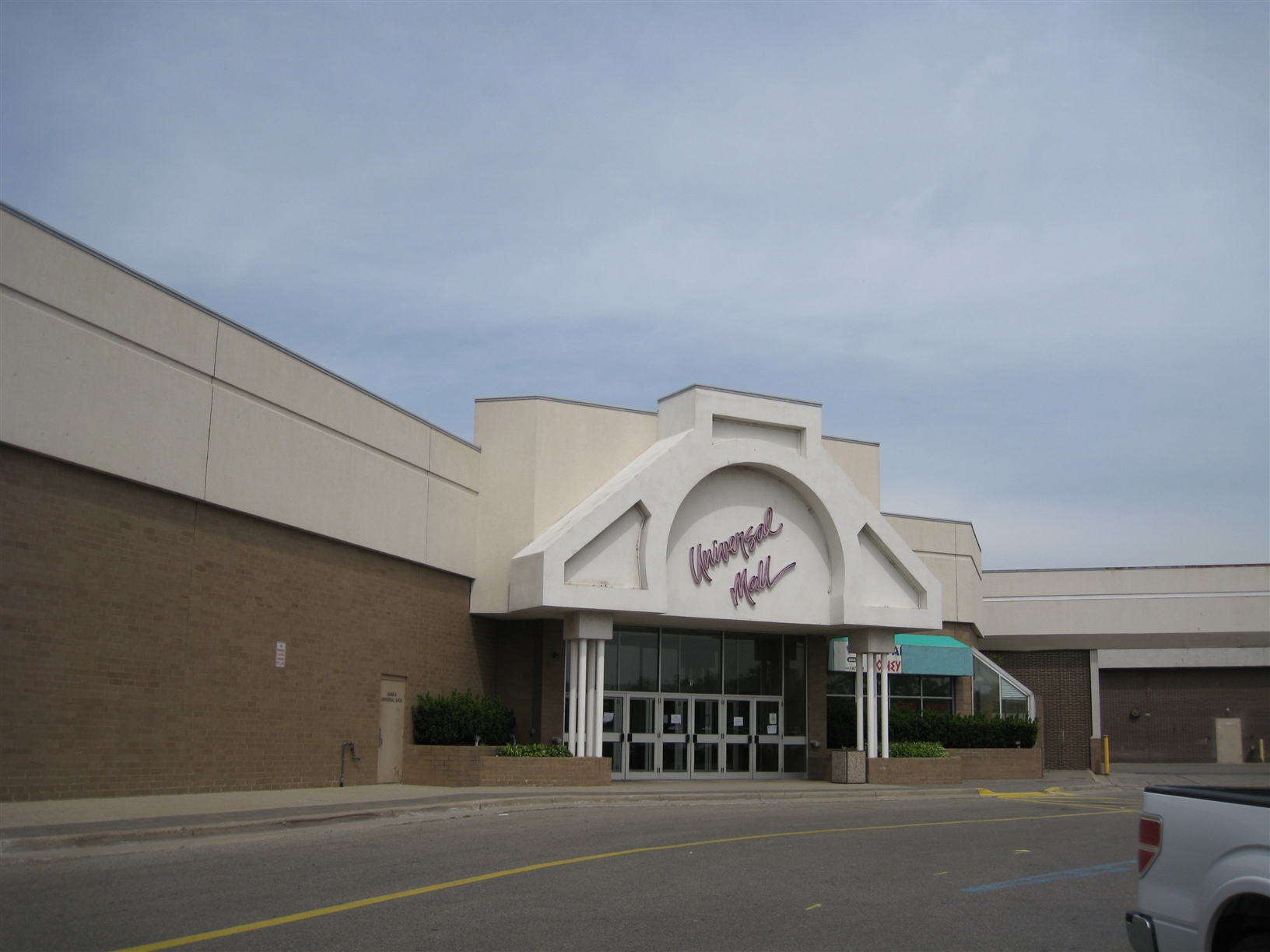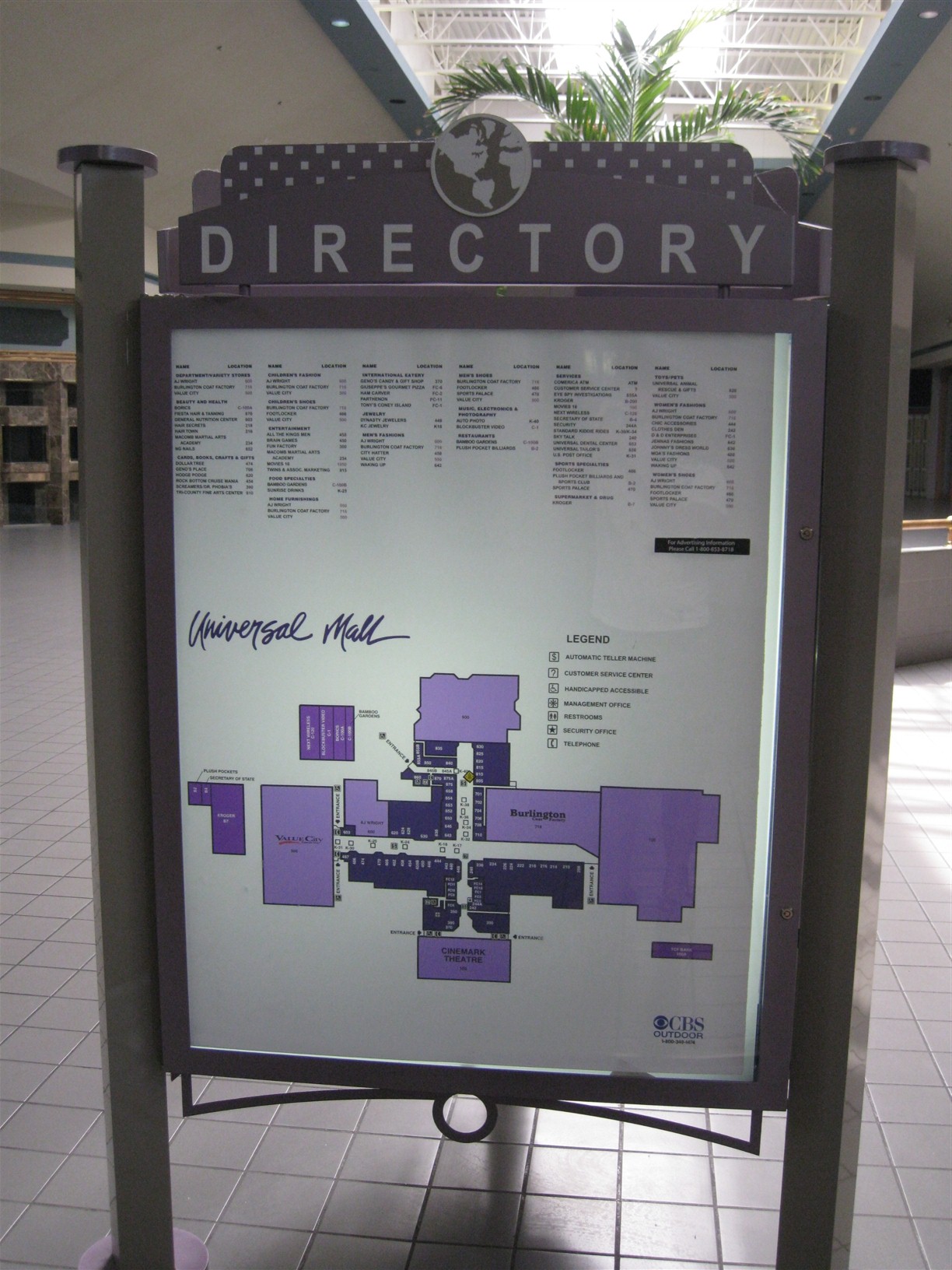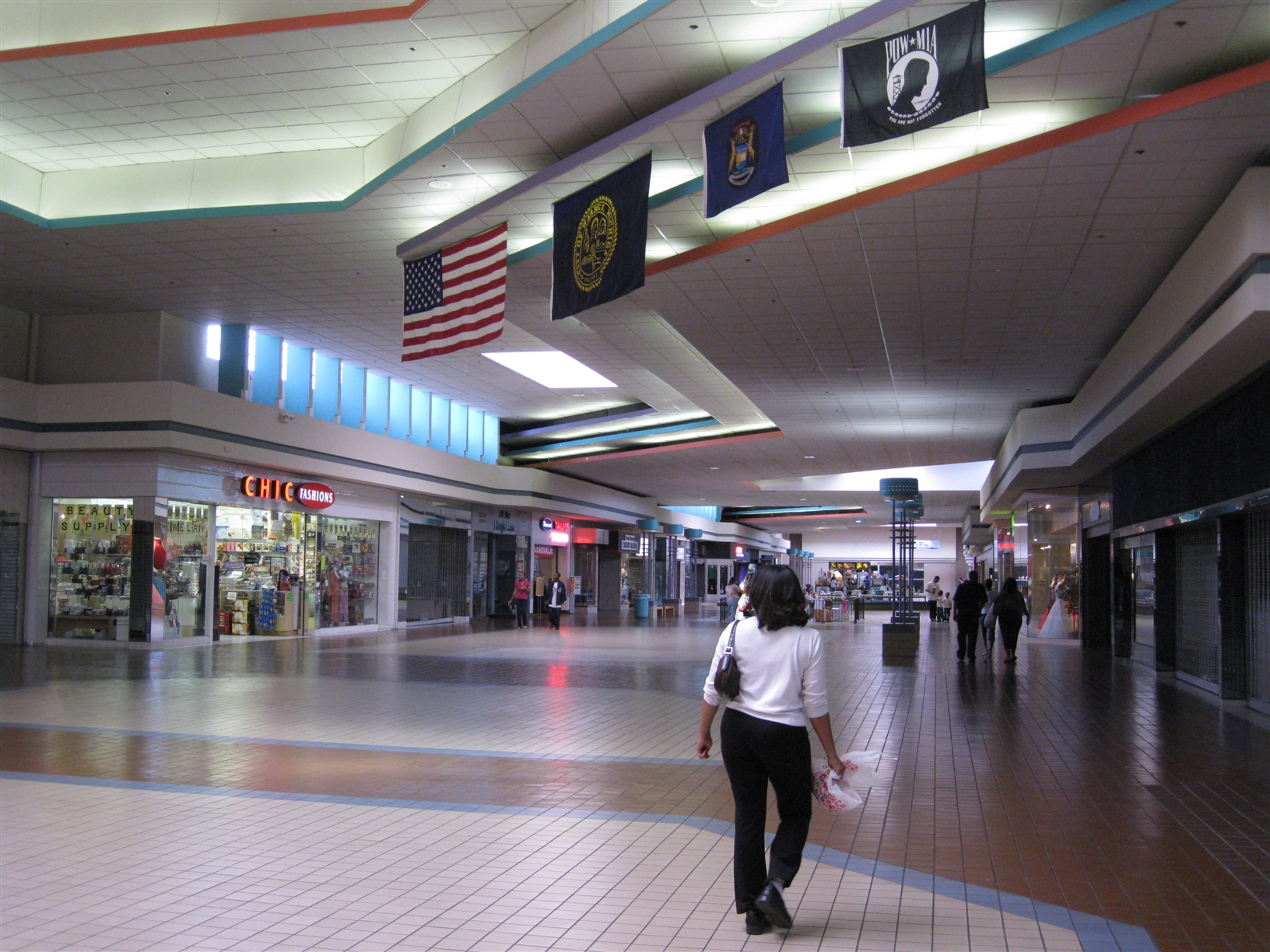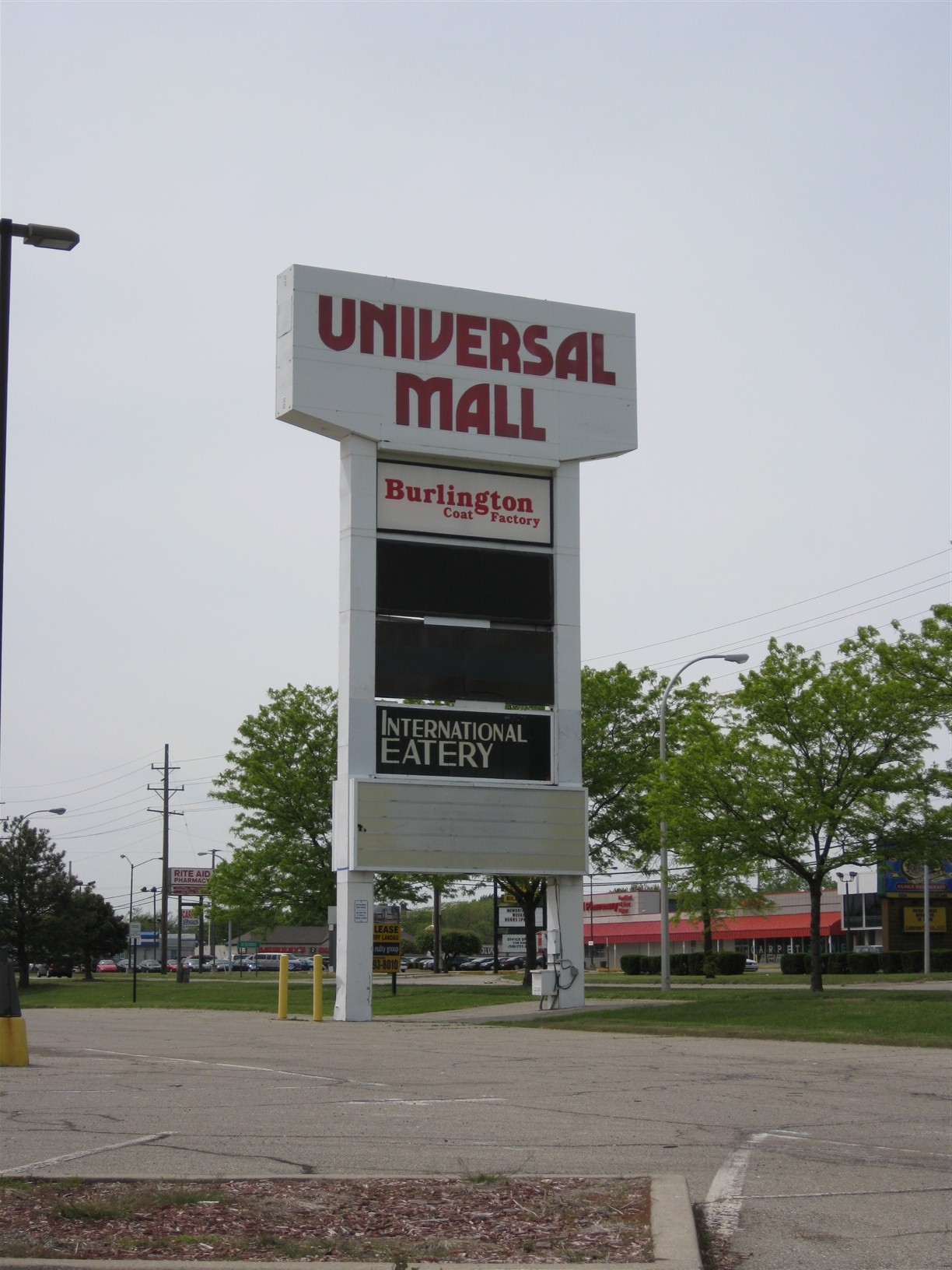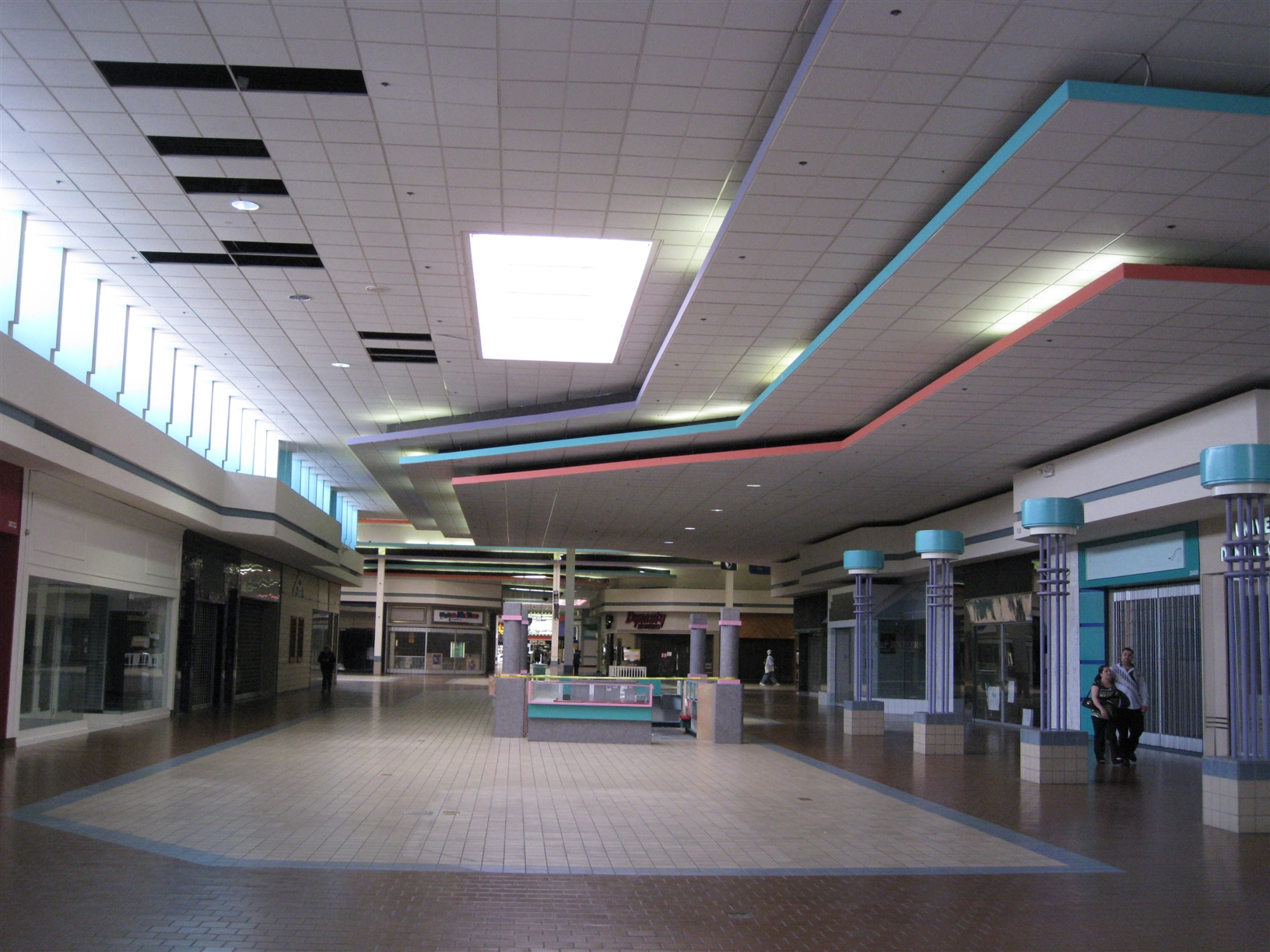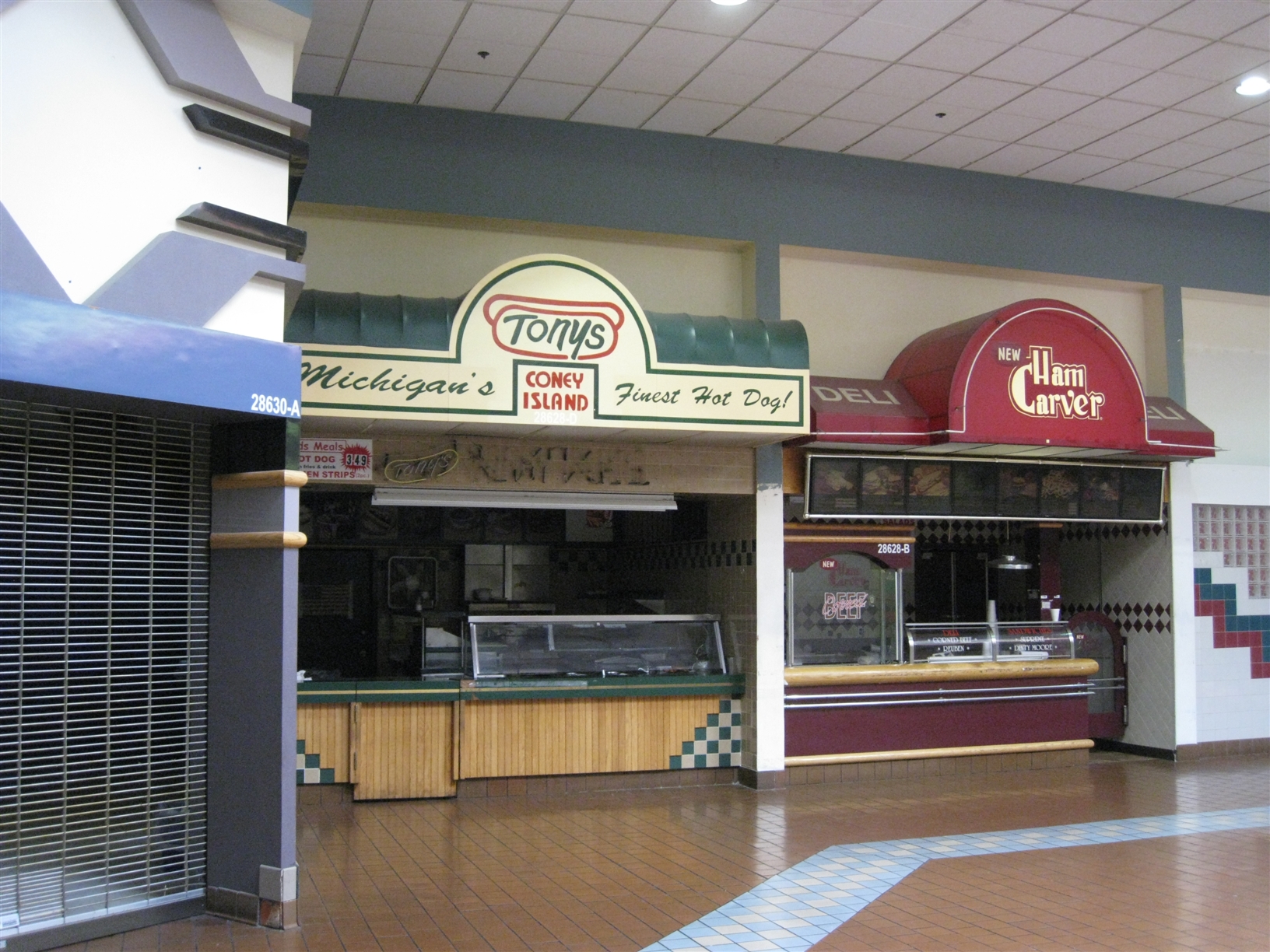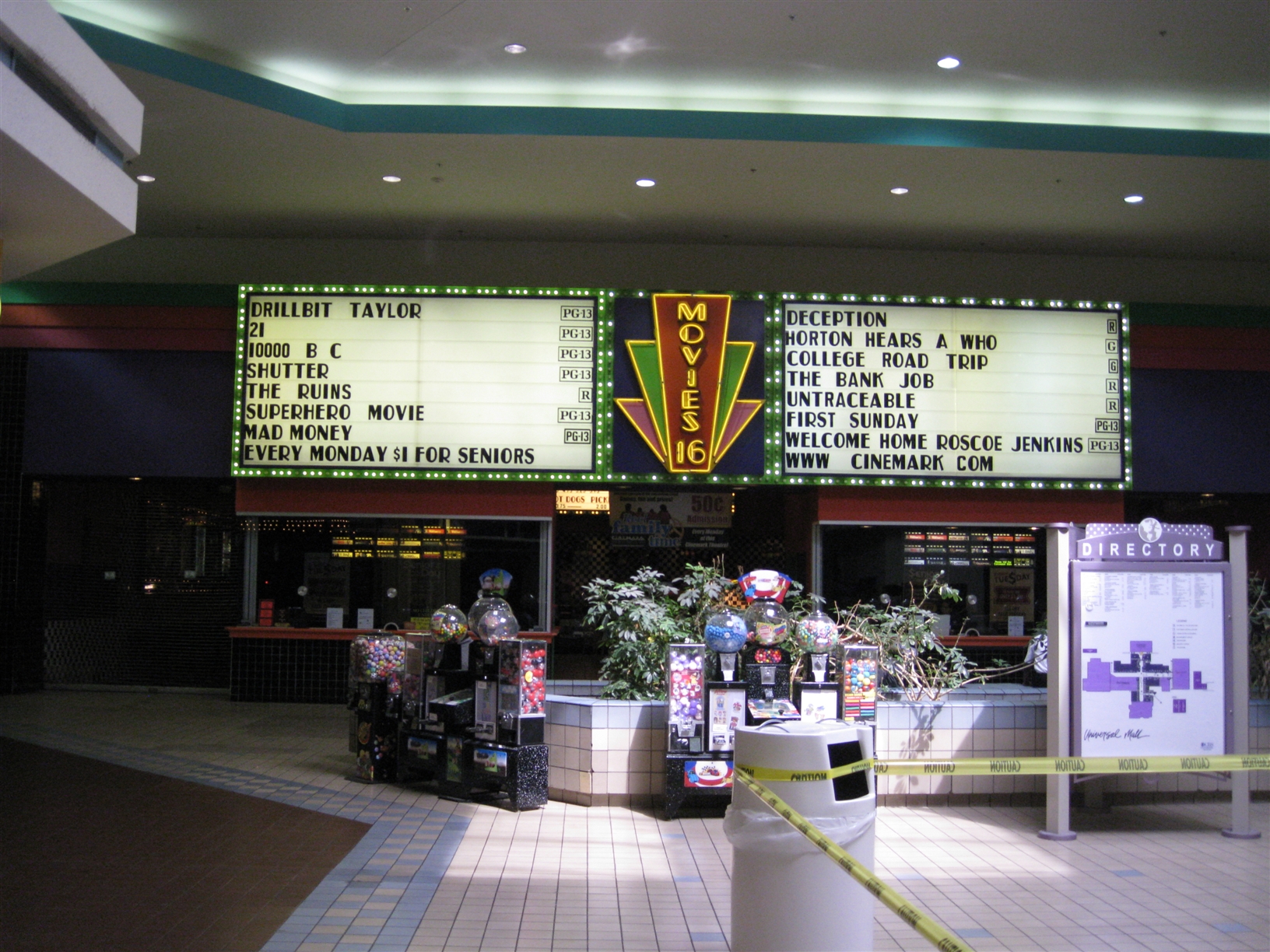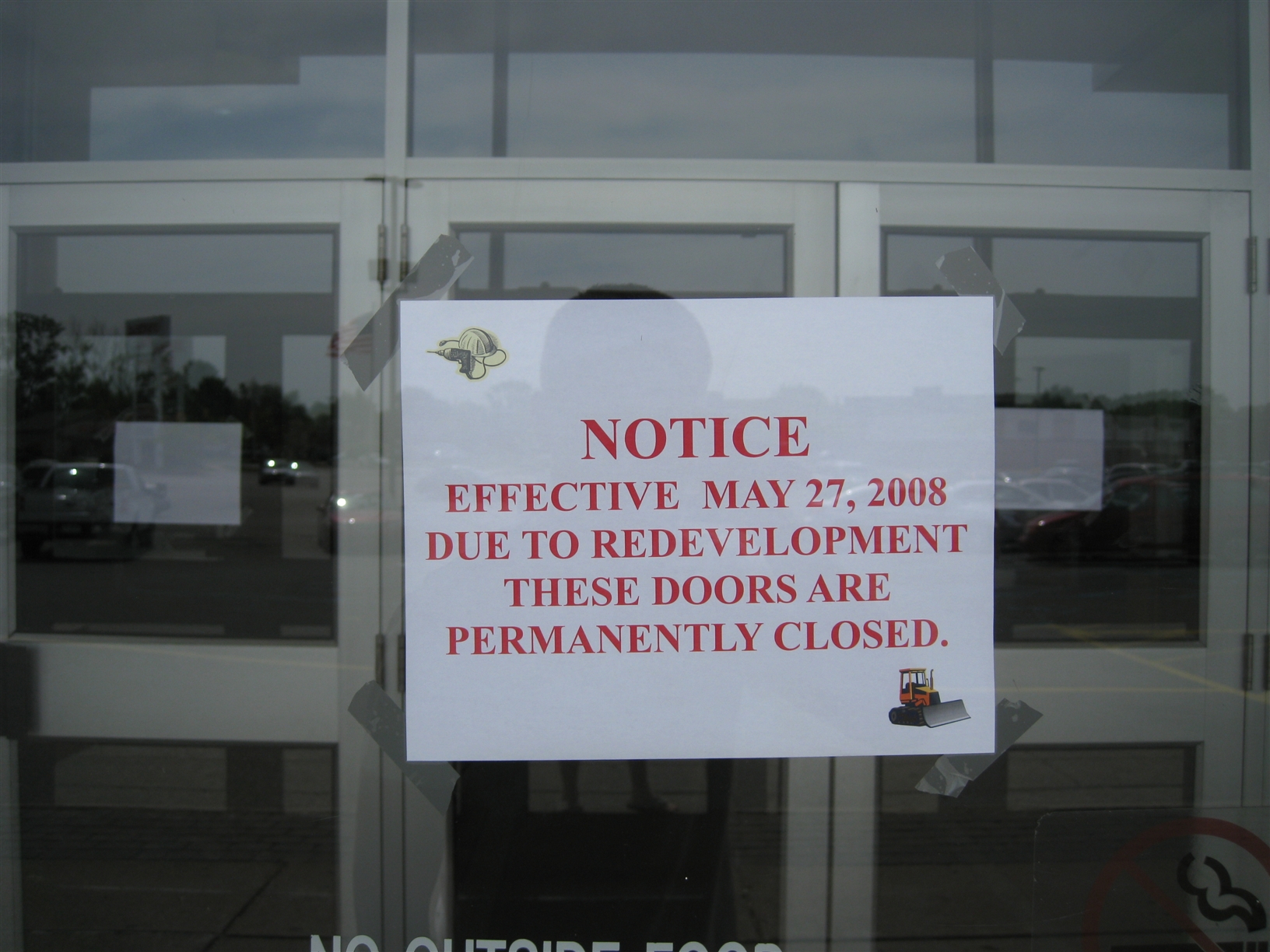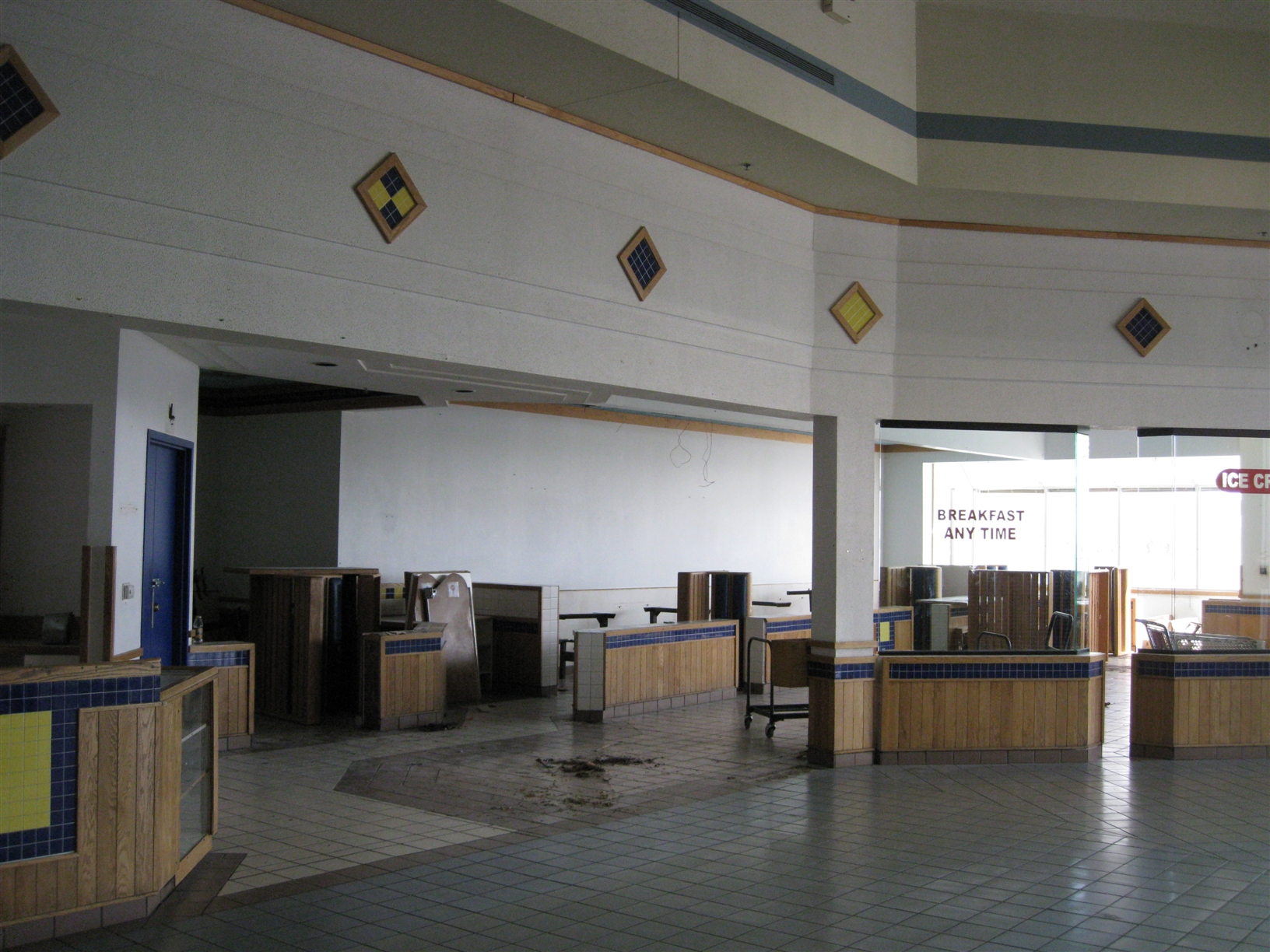Located in south central Wisconsin along the Illinois state line, Beloit is a hearty, working class city of almost 40,000 residents, with a historic past. Located approximately 15 miles south of Janesville, the county seat of Rock County, and 15 miles north of Rockford, Illinois, Beloit has long been known for its roots in manufacturing and for its small-yet-exceptional liberal arts school, Beloit College. However, changing fortunes in the manufacturing industry have outsourced most of these jobs overseas or elsewhere, and Beloit has struggled in recent years to find a foothold in the modern economy – or what’s left of it.
Beloit’s retail scene, which existed downtown for many decades, began to be influenced by competition, taking shape in the form of a shift from downtowns to large-scale, regional suburban shopping centers beginning in the mid-20th century. In 1966, Beloit beat its neighbor to the north – Janesville – to the punch and opened the first of these regional shopping centers in Rock County.
Beloit Plaza, a 400,000 square-foot center, was strategically located just north of downtown Beloit on top of a large bluff overlooking the Rock River. Anchored by three major department stores, Charles V. Weise (a Rockford based department store), JCPenney, and Sears – along with three minor anchors, Walgreens, Woolworths, and Kohl’s (a Wisconsin-based grocery chain, developed in tandem with but not the same as the famous department store chain), Beloit Plaza instantly became a popular regional draw.
At first, accessibility and competition were not problems for Beloit Plaza. Located along busy U.S. Highway 51 in the heart of Beloit, the popular, new outdoor mall enjoyed easy access from Janesville, Rockford, and other cities in its large trade area. However, about the same time Beloit Plaza opened in the middle of Beloit during the 1960s, the interstate highway system was being constructed across the country with Interstate 90 passing the outskirts of Beloit on its east side. The opening of the Interstate past Beloit began to change development patterns throughout not only Beloit, but its neighboring cities as well, creating an era of intense competition that, combined with the local economy, eventually led to the demise of Beloit Plaza.
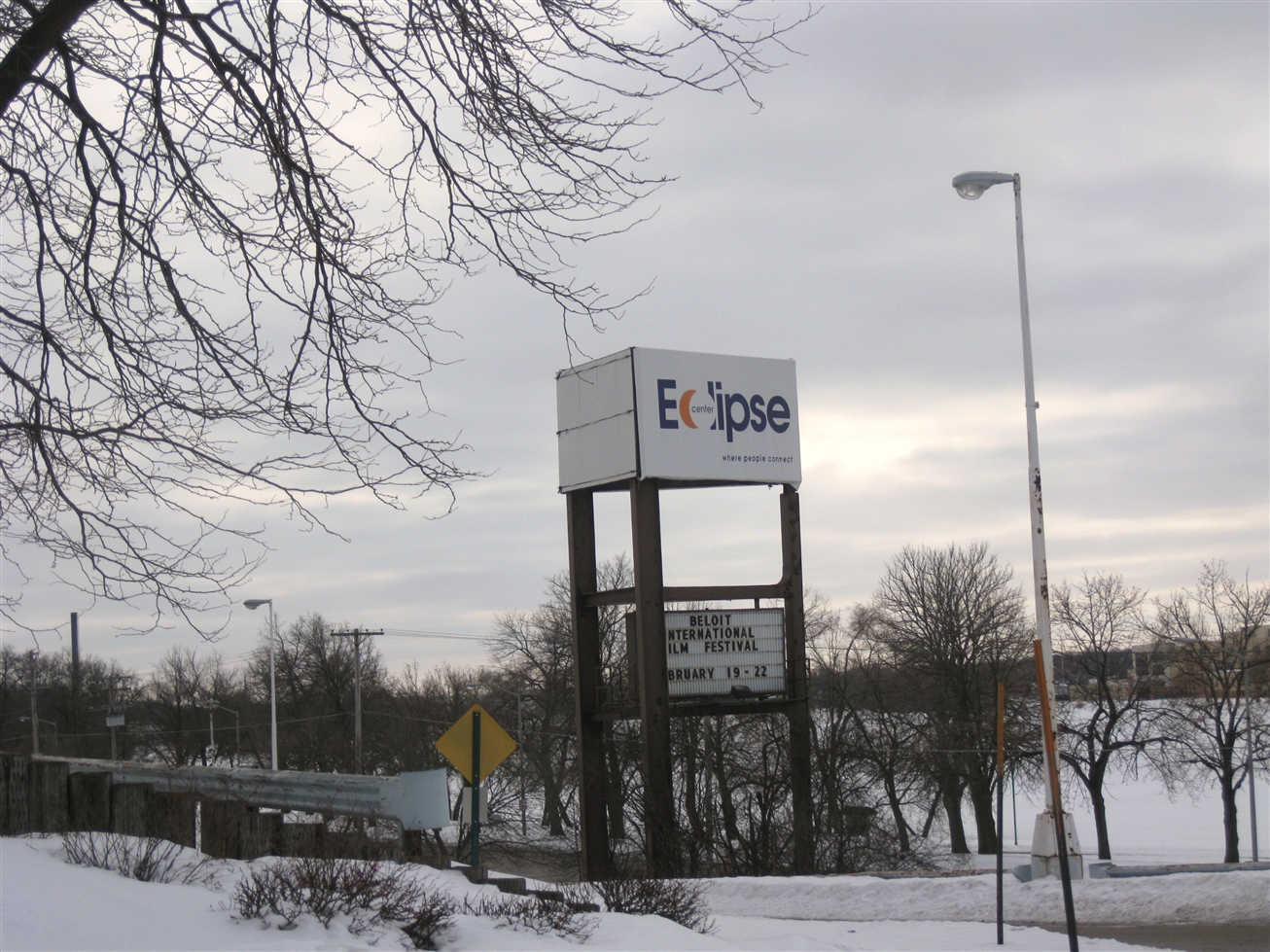 In the early 1970s, large enclosed malls in Janesville, Madison, and Rockford were constructed, giving the outdoor Beloit Plaza not only competition, but makng it somewhat outmoded in terms of design and functionality. Enclosed malls are not only climate controlled, providing the same quality and level of access year round, but the enclosures traditionally bring people together and give them a sense of place and community not often found at outdoor centers. These enclosed malls were also muh bigger than Beloit Plaza, and although Beloit Plaza continued to succeed, it was no longer the super-regional draw it once was. Plus, every one of the newer nearby enclosed malls was closer to Interstate 90, whereas Beloit Plaza was not. Not only could Beloit residents quickly get to better malls in Janesville and Rockford, but residents of Janesville and Rockford no longer needed to go to Beloit Plaza, as most of these stores were duplicated in the newer enclosed malls.
In the early 1970s, large enclosed malls in Janesville, Madison, and Rockford were constructed, giving the outdoor Beloit Plaza not only competition, but makng it somewhat outmoded in terms of design and functionality. Enclosed malls are not only climate controlled, providing the same quality and level of access year round, but the enclosures traditionally bring people together and give them a sense of place and community not often found at outdoor centers. These enclosed malls were also muh bigger than Beloit Plaza, and although Beloit Plaza continued to succeed, it was no longer the super-regional draw it once was. Plus, every one of the newer nearby enclosed malls was closer to Interstate 90, whereas Beloit Plaza was not. Not only could Beloit residents quickly get to better malls in Janesville and Rockford, but residents of Janesville and Rockford no longer needed to go to Beloit Plaza, as most of these stores were duplicated in the newer enclosed malls.
The 1980s brought both infamy and resurgence to Beloit Plaza. On February 2, 1981, two people were murdered at the Beloit Plaza Radio Shack store, and the mall gained a reputation as unsafe. About the same time, manufacturing jobs began leaving Beloit in droves. Meanwhile, nearby Janesville’s economy thrived as manufacturing jobs were added there, driving the regional economy. As a result, Janesville’s population continued to grow while Beloit’s remained stagnant, and Janesville’s retail strip – including its mall – grew along Milton Avenue (Highway 26) between downtown Janesville and Interstate 90.
Likely citing nearby competition, its unsavory location, and the recent high-profile murders, Beloit Plaza owners decided to renovate and enclose the 16-year-old center in 1982. The center retained its wide corridor; however, the 16-foot ceilings were low and the mall always seemed dark inside, even during the middle of the day. Beloit Plaza’s name was also changed to Beloit Mall, and the two-level Weise’s store was renamed Bergner’s during a nameplate consolidation in the P.A. Bergner company.
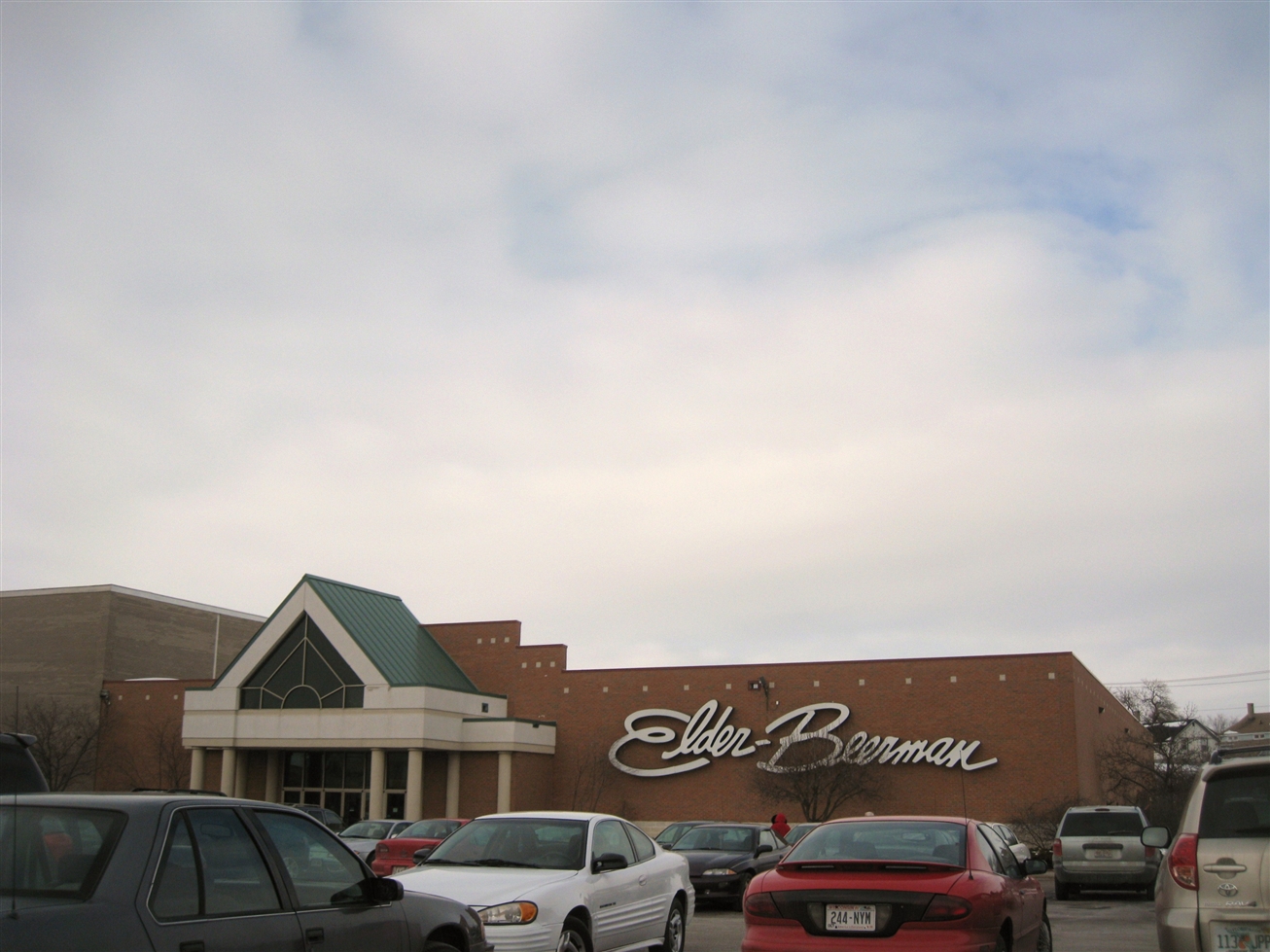 Throughout the rest of the 1980s and into the early 1990s, the renovation and enclosure appeared to work. Beloit Mall held its own against fierce competition from Rockford and Janesville malls, retaining all of its anchors and many in-line stores as well; however, the first casualty came in 1991 when P.A. Bergner declared bankruptcy. As a result of its reorganization, Bergner declared the Beloit Mall store a liability and shut it in 1992.
Throughout the rest of the 1980s and into the early 1990s, the renovation and enclosure appeared to work. Beloit Mall held its own against fierce competition from Rockford and Janesville malls, retaining all of its anchors and many in-line stores as well; however, the first casualty came in 1991 when P.A. Bergner declared bankruptcy. As a result of its reorganization, Bergner declared the Beloit Mall store a liability and shut it in 1992.
With one large anchor vacant and a crumbling economy facing Beloit, the city stepped in and attempted to intervene before the mall fell further down the rungs on the ladder of insolvency. Under an agreement with Canada-based Dorchester Corporation, the city pumped $4.5 million into the mall in order to keep it open; in return, the city gained ownership of nearly half the mall, and the city’s investment was to be repaid over time by taxes and loan repayments – this never happened, but as part of the deal the former Bergner’s was quickly retenanted by Ohio-based Elder Beerman in 1993 – Wisconsin’s first. Elder Beerman chose to demolish the smaller footprint 2-level Bergners and build out into the mall’s east parking lot, disrupting traffic flow around the mall.
Despite the addition of Elder Beerman and a complete roster of anchors and junior anchors at Beloit Mall, more trouble began brewing as Beloit’s economy fell flat and more stores in the mall closed. The next casualty to Beloit Mall was the closure of the Kohl’s grocery store, which happened around 1993-1994. The building was never retenanted and its swoopy arched facade still sits to the side of the north mall entrance, complete with barbed wire placed along the top of the arches to prevent adventurous souls from climbing on its roof. Also about the same time, Woolworths closed its large Beloit Mall junior anchor store citing poor sales and a dowturn for the company in general.
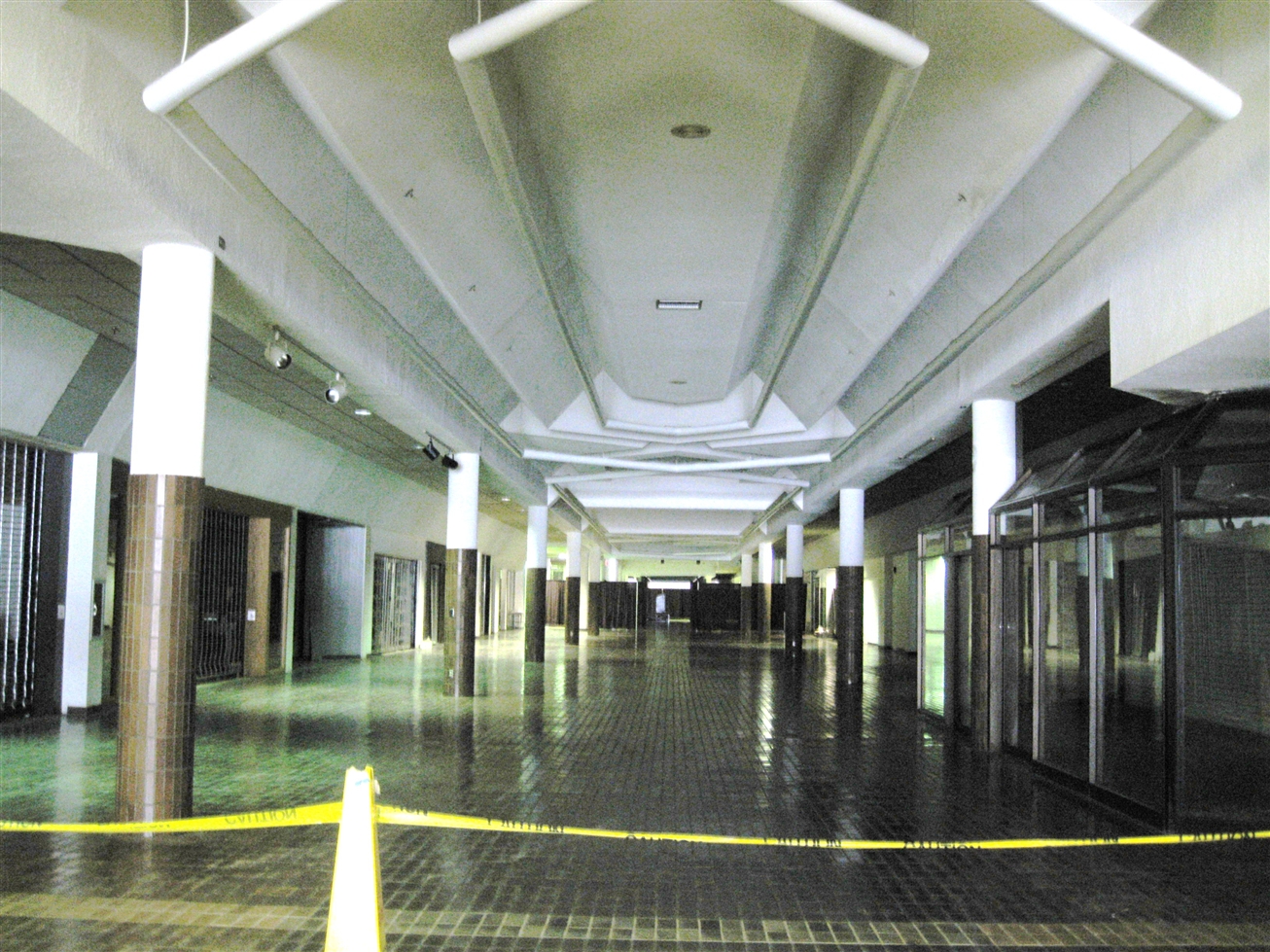 In 1996, the most ominous news came for the Beloit Mall, as the owners of the Janesville Mall were seeking ways to ameliorate the large number of vacancies there, and began talking to Sears. The owners of the Janesville Mall offered Sears the opportunity to build a giant 2-level store at its center court entrance, as well as financial incentives and an auto center on an outlot parcel, all in a city with economic growth on the busiest retail strip in the county. Also, by this point Janesville was almost twice the size of Beloit, which stopped growing in the 1960s. Meanwhile, the Beloit Mall Sears was aging, small, and in a city with little to no economic growth. It wasn’t long before Sears made the obvious decision, and announced it was “moving” from Beloit Mall to Janesville Mall. Despite a passionate letter writing campaign on behalf of Beloit residents to keep the Beloit Mall store open, it closed in Fall 1997 just in time for the brand new store at Janesville Mall to open.
In 1996, the most ominous news came for the Beloit Mall, as the owners of the Janesville Mall were seeking ways to ameliorate the large number of vacancies there, and began talking to Sears. The owners of the Janesville Mall offered Sears the opportunity to build a giant 2-level store at its center court entrance, as well as financial incentives and an auto center on an outlot parcel, all in a city with economic growth on the busiest retail strip in the county. Also, by this point Janesville was almost twice the size of Beloit, which stopped growing in the 1960s. Meanwhile, the Beloit Mall Sears was aging, small, and in a city with little to no economic growth. It wasn’t long before Sears made the obvious decision, and announced it was “moving” from Beloit Mall to Janesville Mall. Despite a passionate letter writing campaign on behalf of Beloit residents to keep the Beloit Mall store open, it closed in Fall 1997 just in time for the brand new store at Janesville Mall to open.
The closing of Sears at Beloit Mall caused a mass exodus of the remaining stores there, which once again alerted municipal officials trying to stave off blight. Local billionaire Ken Hendricks formed a Real Estate group and purchased Dorchester’s interest in the mall, and for the first time in its history Beloit Mall was entirely locally owned by Hendricks and the city. Unfortunately, it was far too late for the failing venture, and more bad things kept happening. In 1997, JCPenney was robbed at gunpoint, and – possibly not coincidentally – JCPenney announced they were leaving and the store was shuttered in 1998.
Also in 1998, realizing the lost potential of Beloit Mall, developers rushed to give Beloit residents some retail options and opened one of the first Wal-Mart Supercenters in the state near the interchange between Interstate 90 and WI 81 on Beloit’s east side. In the decade since the mall failed, this retail district has become its de-facto replacement, attracting many national chain restaurants and retailers in strip malls, as well as new Staples and Menards locations. Just like Janesville and everywhere else, it seems that even Beloit eventually succumbed to development patterns favoring the Interstate.
Once JCPenney left in 1998, only two major stores were left – Elder Beerman and Walgreens – and a small handful of mostly mom and pop stores took up a few spaces in the mostly vacant mall. That same year, Hendricks formed another group and paid off the city, owning the entire mall after that. But, it was far, far too late to consider anything but a total redevelopment, as two more stores in the Beloit Mall – Walgreens and Radio Shack – closed in 2000. After they closed, Elder Beerman sealed their entrance to the mall. Following a series of Hispanic-oriented flea markets in 2000 and 2001, Beloit Mall was sealed except for the Elder Beerman anchor which continues to operate (as of 2009) at the back of the mall.
In the years since the Beloit Mall’s closure, numerous ideas have been floated for the blighted mall. Early on, some of these plans ranged from another go at commercial development, housing, and even a Native American casino, but none of these came to fruition. In 2004, Hendricks bought the entire property from his retail partners with the idea of giving it back to Beloit for municipal/community offices as well as possible retail and other uses. The Beloit 2020 plan, enacted by the city, has embraced Hendricks’ plan and several county and community offices have already relocated into former store spaces in the mall.
In 2007, Hendricks and his development group renamed the mall for the second time – to Eclipse Center, named after the former Eclipse Windmill Company, which was located on a part of the current mall’s property. The new Center opened a banquet facility capable of seating 1000 that same year, a school, and plans were also finalized to relocate the City of Beloit’s Public Library to the site. Also, new signage was put up for the first time indicating the mall’s new name on the main Highway 51 pylon as well as other entrances. In 2008, construction began on the new library, which will be an architecturally pleasing new building located on the site of the former JCPenney.
Unfortunately, although Hendricks successfully rehabilitated many buildings in Beloit and was an ardent supporter of its economy, he will not be able to oversee the full redevelopment of Eclipse Center as he passed away as the result of an accident at his home in December 2007.
Also in 2007, a new shopping center – Oakfield Crossing – was proposed in South Beloit, Illinois, just south of the state line near the interchange of Interstate 90 and IL 75. This center would certainly serve Beloit and the northern Winnebago County, Illinois communities of Rockton and Roscoe, and would feature two anchors and a strip of stores in between them. As of late 2007, Target had signed on to be one of the anchors, and Bergner’s was to be the second; however, the project was put on hold in mid-2008 because Target had changed its building design. If a Bergner’s would open here, I suspect the Elder Beerman would probably leave Eclipse Center.
We visited Eclipse Center in January 2009 and took some of the pictures featured here. The only retail on the site today is the holdover department store Elder Beerman, which is still shockingly still in operation and ironically now owned by the Bon Ton Corporation, who also owns Bergner’s. Also, parts of the mall are actually becoming accessible again as more offices and services locate here. As of January 2009, the north entrance was open and most of the mall was accessible. However, the entrance is technically only open to access the offices located just beyond the entrance, and signs and tape indicate not to go farther into the mall or alarms will go off and the police will come immediately. Yikes. In addition, it is not known how the library will interact with the mall space once it is complete, nor is it known why the signage for the mall’s center court, advertising where ‘people connect’ exists, as these doors were locked!
Personally, I have many fond memories of Beloit Mall from the late 1980s and early 1990s – its enclosed heyday. Our family often took shopping trips to the mall for both variety’s sake and also because Beloit Mall had Sears when Janesville didn’t. Even though Janesville Mall was technically 10 years older than Beloit Mall (at least by dates of enclosure), I always felt Beloit mall was older and not as nice. I remember the anchor stores seemed ancient, which makes sense now because they were much older than the mall. I also remember Fannie May Candies, Mr. G’s Soup-er-Sandwiches – I didn’t get this pun until I was an adult; I thought the sign was indicating indecisiveness or a stutter – Woolworths, Walgreens – both had old-fashioned lunch counters – and several smaller 80s-style glass kiosks were shoved up against the wall at Sears near the north end.
We’ll keep an eye out for updates to this story. It would be great if most of the mall could be opened up for re-use and benefit the community at the same time. Feel free to leave your own comments and experiences with Beloit Plaza, Beloit Mall, or Eclipse Center.
March 2001:
January 2009:
